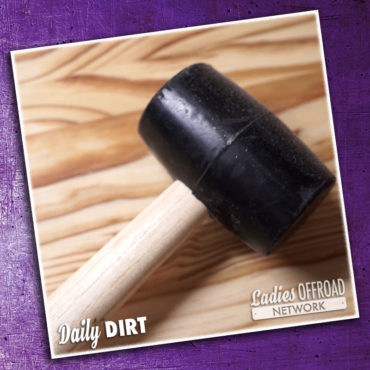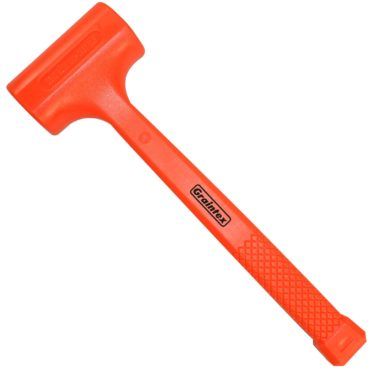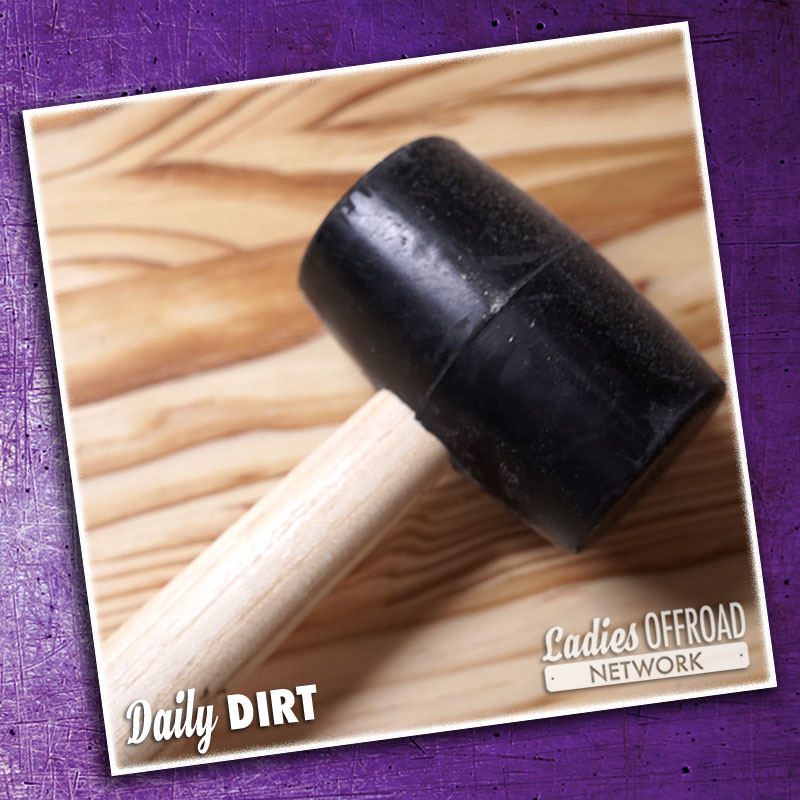 After going to the King of the Hammers for years now, I have to say, the most commonly used tool in each pit is always a mallet!! From helping beat body pieces back to straight, to helping dislodge bound up parts; the mallet was in every tool box. I've observed that there are many different kinds and sizes of mallets. After some research I have found that there are even more than I first thought!
After going to the King of the Hammers for years now, I have to say, the most commonly used tool in each pit is always a mallet!! From helping beat body pieces back to straight, to helping dislodge bound up parts; the mallet was in every tool box. I've observed that there are many different kinds and sizes of mallets. After some research I have found that there are even more than I first thought!
Rubber Mallet
A rubber mallet is used when a softer blow is needed, instead of a harder impact of the typical claw metal hammer. The mallet heads are soft to minimize the damage to what you are hitting. Because they have a broad face, mallet heads spread the force over a wide area, and are less likely to dent the impact area.
A rubber mallet is typically used to form sheet metal, for forcing tight-fitting parts together, for shifting plasterboard into place, in upholstery work, and a variety of other general purposes.
When choosing a mallet, choose one that is softer than what you're hitting. Rubber is the most common, but brass, plastic, rawhide and wood are all popular. There are different weights of mallets ranging from 8oz to 3 lbs. The weight of the mallet you want depends on the force that you are trying to apply to your project. Generally speaking, bigger is better, but the most common size for an everyday tool box is in the 1lb zone.
Because mallet heads are soft they will wear out. Some mallets have removable faces, making it cheaper to replace and allowing you to swap in harder or softer faces depending on what you're working on.
Deadblow Mallet
 Hammering on flexible material or using rubber mallets can cause the mallet to bounce which is a problem. The bounce makes it difficult to control. To solve that problem, there are dead blow mallets. The inside is hollowed out and filled with lead or steel shot. This reduces bounce by putting all of the blow into the strike. You won't necessarily be able to tell by looking at a mallet if it is a deadblow or not, but once you pick it up you will be able to feel the weight.
Hammering on flexible material or using rubber mallets can cause the mallet to bounce which is a problem. The bounce makes it difficult to control. To solve that problem, there are dead blow mallets. The inside is hollowed out and filled with lead or steel shot. This reduces bounce by putting all of the blow into the strike. You won't necessarily be able to tell by looking at a mallet if it is a deadblow or not, but once you pick it up you will be able to feel the weight.
Other Mallets
There are many other mallets used in different trades outside of automotive. Wood mallets are generally used in carpentry. Softer than steel - copper, brass and leaden mallets are typically used on machinery to apply force to parts with a reduced risk of damaging them. Meat mallets tenderize or flatten out meat. Rawhide mallets are used for leatherwork, jewelry, assembling electric motors and delicate machinery. Plastic mallets are used in leatherwork and jewelry. Tile mallets are white and allows a installer to tap the tile into place with minimum bounce.
Then there are musical mallets that are used as drumsticks. They are often used to strike a marimba, xylophone, glockenspiel, metallophone, or vibraphone.
Whats Next:
Do you have a rubber mallet? I'm not sure what you have that you could try pounding on, but maybe just keep it handy until the next time you are trying to separate some parts or need a little 'body work' done. If you don't have one, they aren't expensive to add into your arsenal. Click Here for a good option.
Author: Charlene Bower P 2/14/2017
Share with your friends on Facebook:
Share with your friends on Instagram:
Share with your friends on Pinterest:





